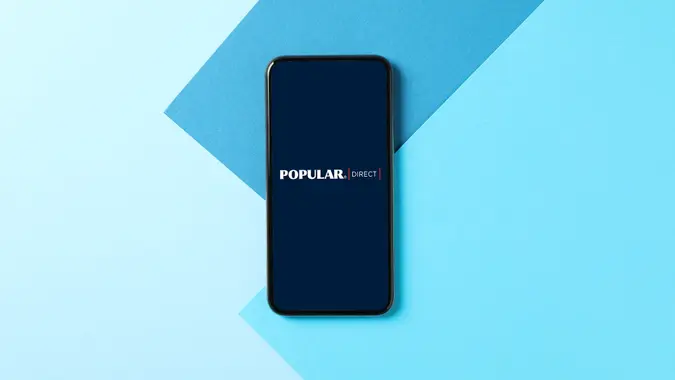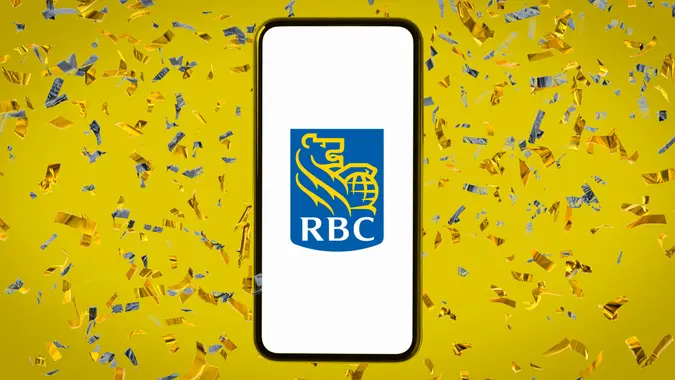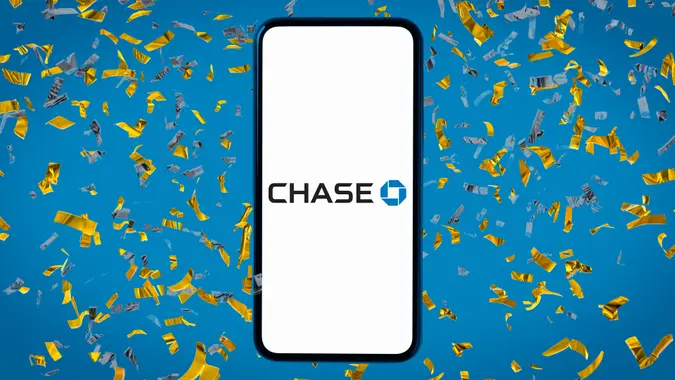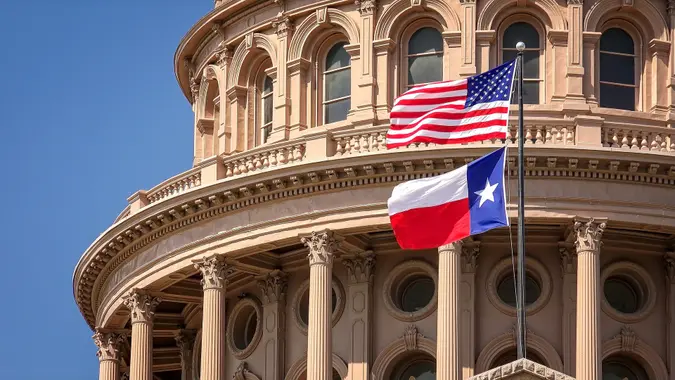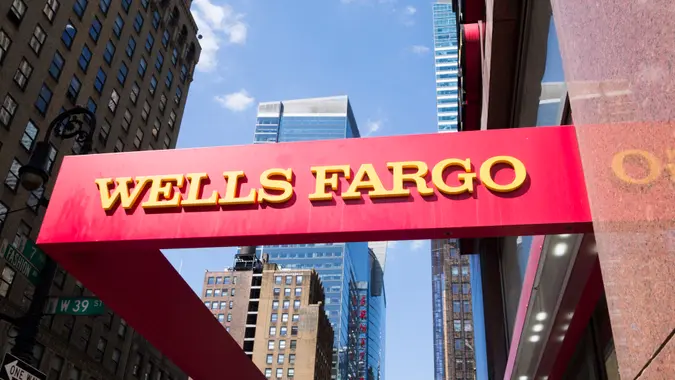How to Avoid Bank Fees: 10 Most Common Charges and How to Dodge Them

Commitment to Our Readers
GOBankingRates' editorial team is committed to bringing you unbiased reviews and information. We use data-driven methodologies to evaluate financial products and services - our reviews and ratings are not influenced by advertisers. You can read more about our editorial guidelines and our products and services review methodology.

20 Years
Helping You Live Richer

Reviewed
by Experts

Trusted by
Millions of Readers
Getting hit with an unexpected banking fee can be frustrating. If you’re not careful, these fees can add up quickly. Some of these fees, as in the case of overdrafts, can even compound. Fees are more common than you might think and banks may charge you when you aren’t expecting it. Read this guide find out how to avoid bank fees.
10 Common Bank Fees and How to Avoid Them
You may be familiar with some of these common fees. Here is a chart listing common bank fee types and the average cost:
| Fee Type | Average Fee |
| Monthly Maintenance Fee | $5 to $20 (sometimes fees are waivable) |
| Overdraft Fee | $30 to $35 |
| Non-Sufficient Funds Fee | $30 to $35 |
| ATM Withdrawal Fee | $2 to $3 (can be waived if you have certain accounts) |
| Wire Transfer Fee | Domestic Wire Fee – $20 to $30 International Wire Fee – $40 to $50 |
| Foreign Transaction Fee | 1% to 3% of the transaction fee |
| Paper Statement Fee | $2 to $3 |
| Early Account Closure Fee | $25 to $30 |
| Excessive Withdrawal Fee | $5 to $10 |
| Inactivity Fee | $5 to $10 per month |
1. Monthly Maintenance Fees
What they are: This is typically a monthly service fee that may be charged to keep the account open. Depending on the bank and account chosen, the fee can range from $5 to $20 or more. Fees may also be assessed for having a low balance or not setting up direct deposit.
- Average fee: $5 to $20 per month.
- How to avoid:
- Maintain a minimum monthly balance (typically $500 to $1,500).
- Set up a direct deposit of your paycheck.
- Consider fee-free accounts offered by many online banks.
- Here’s what that might look like: Bank of America, Member FDIC, charges up to $12 per month for its Advantage Plus Banking® account. However, you can avoid this fee entirely if you maintain a minimum daily balance of $1,500 or more.
2. Overdraft Fees
- What they are: You may incur overdraft fees if you spend or withdraw more money than you have in your account. Overdraft fees can be as high as $40 at some banks and you may get hit with several at once if you have multiple transactions that process at the same time.
- Average fee: $30 to $35 per transaction.
- How to avoid:
- Set up alerts for low balances.
- Link a savings account or credit card to cover overdrafts.
- Use overdraft protection if your bank offers it (sometimes free with certain account types).
- Here’s what that might look like: You accidentally spend $50 more than your account balance and face a $35 fee for the overdraft.
3. Non-Sufficient Funds (NSF) Fees
- What they are: While some transactions cause your account balance to go negative and are covered temporarily by your bank, some payments are simply declined due to insufficient funds — known as “NSF fees.” These fees can add up quickly, especially if several transactions decline within a few days.
- Average fee: $30 to $40 per failed transaction.
- How to avoid:
- Keep track of your spending and avoid writing checks or authorizing payments when you don’t have sufficient funds.
- Set up low-balance notifications.
- Consider setting up an emergency fund so that you can transfer money into your account if balances dip.
- Here’s what that might look like: A check for $100 is returned due to NSF, and you incur a $35 NSF fee.
4. ATM Withdrawal Fees
- What they are: You will incur ATM fees if you use ATMs outside of your bank’s network. Your bank and the ATM operator may assess fees, hitting you with multiple fees in one transaction.
- Average fee: $2 to $3 for using an out-of-network ATM, plus an additional fee by the ATM operator.
- How to avoid:
- Use ATMs within your bank’s network.
- Inquire whether you can sign up for a checking account that reimburses for out-of-network ATM fees.
- Choose a bank that reimburses out-of-network ATM fees.
- Here’s what that might look like: Chase charges $3 per withdrawal at a non-Chase ATM in the U.S., Puerto Rico, and the U.S. Virgin Islands.
5. Wire Transfer Fees
- What they are: Wire transfers are a quick and convenient way to send or receive money but you’ll often be charged a service fee for them. Some banks only charge for international transfers, but others also charge a fee for domestic wire transfers. These fees can range from $25 to $50 or more, depending on who you bank with.
- Average fee:
- Domestic: $20 to $30 for sending, $10 for receiving.
- International: $35 to $50 for sending, $15 to $20 for receiving.
- How to avoid:
- Use free transfer methods like Zelle or Venmo (available through most banks).
- Choose a bank with lower or no wire transfer fees.
- Some accounts will waive domestic and international wire fees.
- Here’s what that might look like: A domestic wire transfer of $500 may cost you $25 to send and $10 to receive, totaling $35 in fees.
6. Foreign Transaction Fees
- What they are: Foreign transaction fees are charged when you make purchases or withdraw cash in a foreign currency. These fees can range from 1% to 3% of the transaction amount, adding up quickly if you’re traveling abroad.
- Average fee: 1% to 3% of the transaction amount.
- How to avoid:
- Use a credit card with no foreign transaction fees.
- Use a bank that doesn’t charge foreign transaction fees on debit card purchases.
- Here’s what that might look like: If you buy a $100 item abroad, a 3% fee would result in a $3 charge on top of the purchase price.
7. Paper Statement Fees
- What they are: Paper is expensive and bad for the environment. Electronic statements can be much more convenient than paper copies. Many banks charge extra if you want paper statements.
- Average fee: $1 to $5 per month.
- How to avoid:
- Opt for electronic statements instead of paper.
- Here’s what that might look like: If you prefer paper statements, you could face a $3 monthly charge. Some banks charge more. Bank of America charges $5 for a paper statement.
8. Early Account Closure Fees
- What they are: Some banks charge this fee if you close your account within a set period (usually within 90 days).
- Average fee: $25 to $50.
- How to avoid:
- Be sure you won’t need to close your account in the first 90 days.
- Check your bank’s policy before opening the account to ensure it’s right for your needs.
- Here’s what that might look like: Chase Bank may charge $25 if you close your account within 90 days of opening.
9. Excessive Withdrawal Fees
- What they are: The federal limit for withdrawals on your savings account is six free withdrawals per month. While this law was lifted back in 2020, some banks still impose this limit on specific accounts. If you exceed this limit, you’ll likely be charged a fee for any additional transactions.
- Average fee: $5 to $10 per excessive withdrawal.
- How to avoid:
- Limit your withdrawals to the account’s allowed monthly limit (usually 6).
- Use a checking account for regular spending.
- Here’s what that might look like: You make 8 withdrawals from your savings account, resulting in a $5 fee for each additional withdrawal.
10. Inactivity Fees
- What they are: Charged when you don’t use your account for an extended period.
- Average fee: $5 to $10 per month after a certain inactivity period (usually 6 to 12 months).
- How to avoid:
- Make small deposits or withdrawals regularly.
- Set up automatic payments or transfers.
- Here’s what that might look like: After 6 months of inactivity, your bank may charge a $7 monthly inactivity fee
Best Practices for Keeping Bank Fees Low
You want to avoid losing money to bank fees. To keep your bank fees low, it is crucial to follow these tips:
- Review account terms regularly. Banks can change their fees from time to time and make sure you review disclosures and correspondence regarding your account regularly.
- Negotiate fees with your bank. You can negotiate fees if you’re in good standing with your bank. You need to ask if this is possible.
- Switching banks if necessary. Many banks offer fee-free checking and savings accounts. Do your research and make a switch if required.
Though you should plan for standard bank fees, there is no reason you have to pay them if you know how to avoid them consistently. Some banks even offer no-fee accounts to help you keep more of your money. Often, these accounts don’t charge fees for bill pay, ATM usage or other services.
Editorial Note: This content is not provided by any entity covered in this article. Any opinions, analyses, reviews, ratings or recommendations expressed in this article are those of the author alone and have not been reviewed, approved or otherwise endorsed by any entity named in this article.
 Written by
Written by  Edited by
Edited by 






